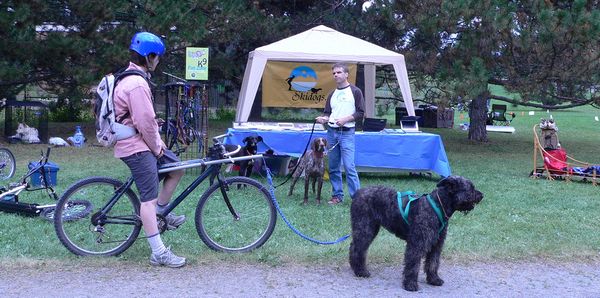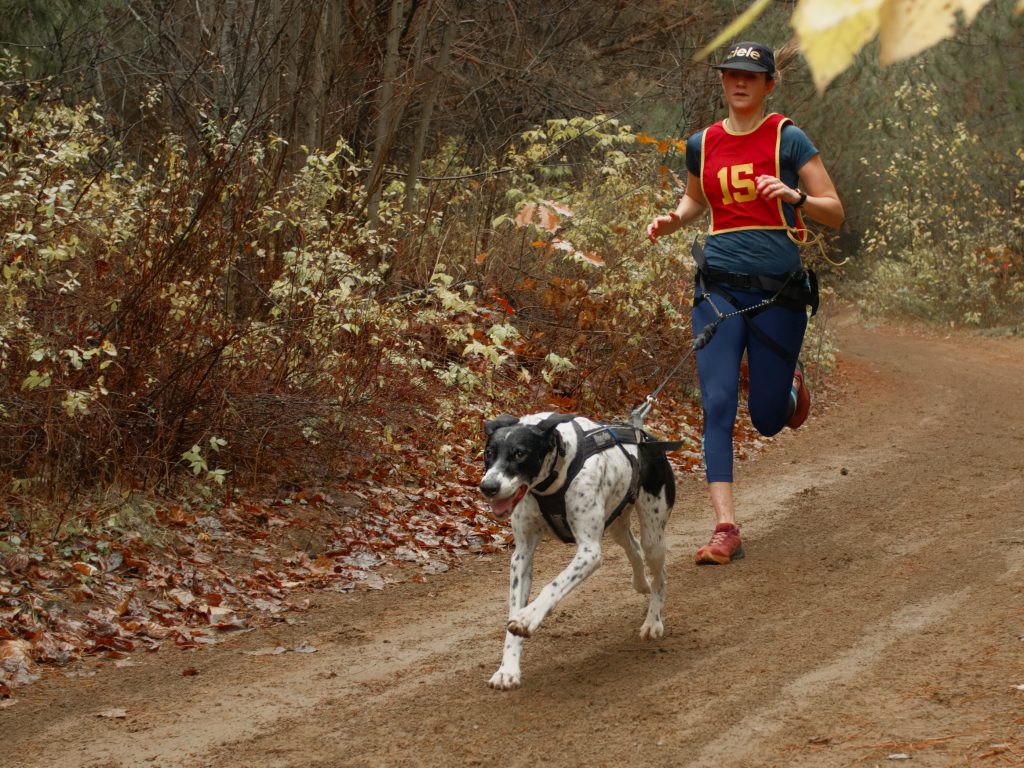The terms
GEE: Indicates a right turn
HAW: Indicates a left turn
GEE over: Indicates a toss over to the right
HAW over: Indicates a toss over to the left
How do they learn
I think of learning directional commands more as something that happens rather than something that I teach. We are associating a word to an already existing action.
It happens in the same way your dog has learned the meaning of “walk” or “treat” ( I believe you didn’t go to doggy school for your pup to figure those out), learning “gee” and “haw” can simply happen.
The secret to this: repetition
Turning left and right are common occurrences to which we need to attach a command. Using every opportunity to associate a turn to the command will add up to a lot of repetition.
Only rule: limit the chances of error
- At first, only use the command when you instigate the turn and have full control on the dog (on the leash)
- When your dog is starting to figure out Gee and Haw are associated with turning, leave an initial time of reaction to make the right choice but have a position of control so you can correct immediately if the dog is taking the wrong direction. (correct as correct the direction, not correct the dog, there is no wrong doing in learning)
- When you start using the command in harness, only use it for turns that are obvious, when the dog doesn’t have the option to make the wrong turn.
- As you are more confident in you dogs ability to make the right choice, raise the level of difficulty. If your dog guesses too much, makes the wrong choice too often, go back a step and only call obvious turns again. If there are too many errors, it’s because you have moved on too soon.
Some dogs learn directions very fast… some take longer and need more reminders… sort of like people. Set your dog up for success and be patient.
A few ideas
Here’s a few ideas on how to use or make up opportunities to associate Gee and Haw with left and right turns.
- Call turns on leashed walks. Your dog hears what you are saying and is likely paying more attention than you may think.
- If you can bring your dog into stores, walking through the aisle can be many opportunities in a short period of time for turns to be associated with the word.
- When your dog is walking on a trail with you, just as your dog engages into a turn, call the turn.
- With a ball motivated dog, you can play games such as throwing the ball to one side or the other, immediately before the throw, call the side. Make sure you and your dog are facing the same direction.
- Sitting with your dog between your legs, tap your dog’s shoulder while calling the side, offer a treat on that side when your dog turns its head to the side you called. If your dog seems to understand the directions try by only calling the side (no shoulder tap).
- You know your dog best, maybe you can think of similar games that will be motivating for him to make the appropriate association.

The big question: Do I have to use GEE and HAW?
The GEE and HAW question that is always asked: “Should I use Gee (right) and Haw (left) or can I just use right and left?”
I am bilingual and I am a sailor so the number of directional associations my human brain needs to remember feels endless: gauche/droite, left/right, babord/tribord, red/green …and now gee/haw … it took me so long to actually know my left from my right and I must add more?
In my early years in harness sport, like everyone, I wanted to make it simple for myself and only use left and right… It seemed easier. Over time and experience, I changed my mind.
- As you get more into the sport, you will likely get the opportunity to run different dogs from friends or acquaintances. Maybe even team up your dog and someone else’s dog. Running multiple dogs that use different vocabulary is inconvenient.
- Gee and Haw have been used for all working animals (dog, horses, ox…) directions by so many cultures for and for so long that you will hardly find the origins of the use of the terms. There is a good reason why the terms stick, they work well the animals hear and distinguish them. Gee and Haw are distinctive sounding, short and effective.
- When you interact with other trail users, you will have distinct vocabulary to instruct your dogs and other trail users, limiting confusion for both. Let me use an examples to illustrate this with real scenarios :
- This skijorer was going along well with his two good dogs on a multi-use trail. He was catching up on someone walking in the middle of the trail. There was space to go by on the left. The skijorer calls “go left”. The walker hears him and jumps to the left causing a collision. The skier was talking to his dogs, not to the walker but the walker reacted as he heard the skier. Had the skier called “Haw over” to the dogs, the skier would not have been confused. Even better, he could have told the walker “please go to the right” and call ‘haw over” for his dogs.
- I commonly go on trails with friends. Approaching an intersection I may ask “hey do we want to go left or right” . Because I use Gee and Haw with the dogs, I am able to communicate this question to my human partner without confusing my dogs.
In the end, there is no rule about the commands you choose, but Gee and Haw have been used for a long time, it is still the most used directional command with animals and reasons are not just that it sounds sharp. If you ask me, I will say with no hesitancy to go with GEE and HAW, but you use what ever word you want, just be consistent. If you have difficulty with which is which direction, train yourself along with your dog…. repetition.




